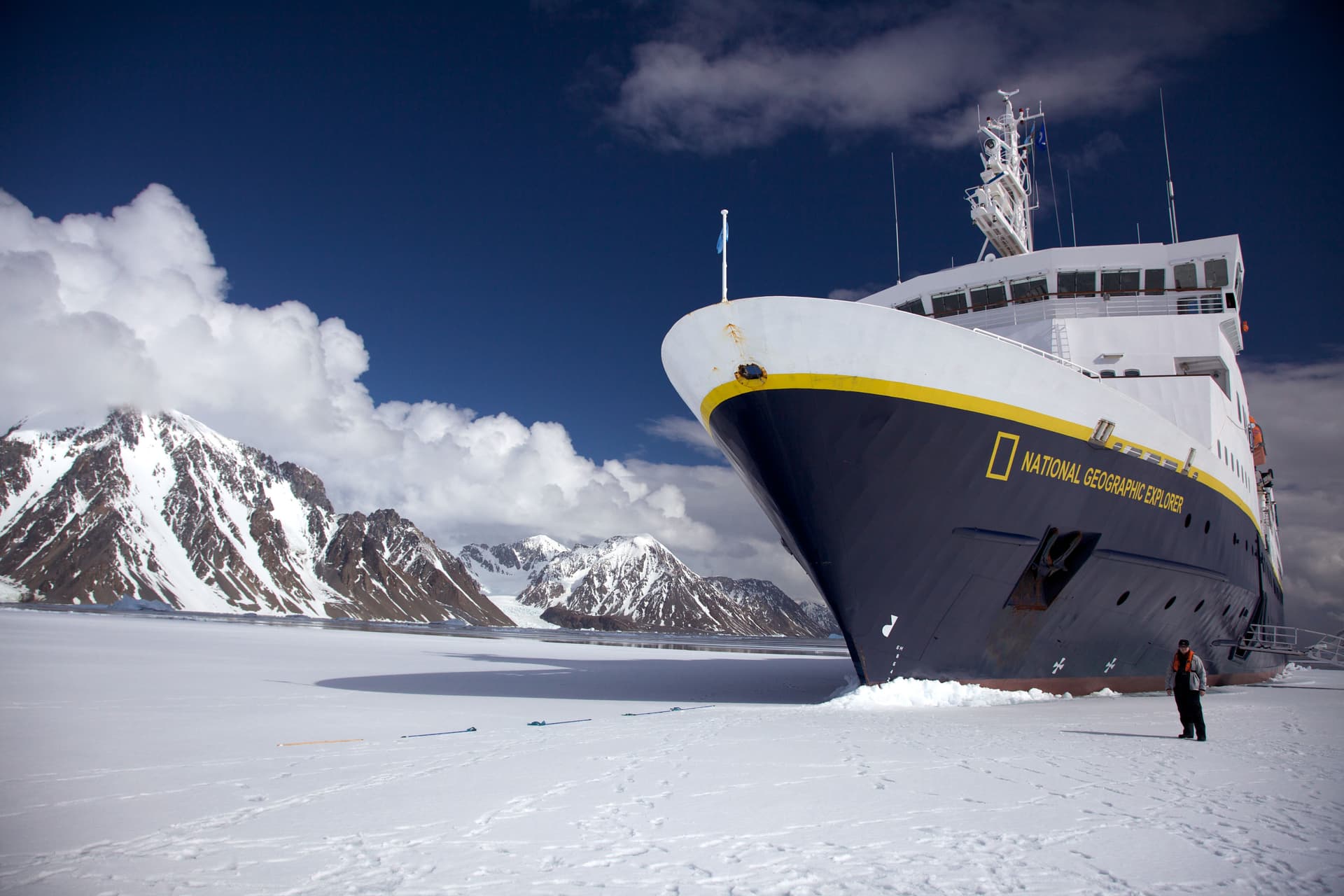Overview
6,471
Gross Tonnage
148
Guest Capacity
1982
Year Built
2017
Last Refit
1.72
Crew Ratio
Since its launch in 1982 and its transformative update in 2008, the National Geographic Explorer has set the standard in expedition cruising. Designed with an ice-strengthened hull and top-tier navigational technology, this state-of-the-art vessel is adept at navigating the untouched polar regions and other secluded spots across the globe. With room for 148 guests, it delivers a unique blend of intimate adventure and luxurious comfort, allowing travelers to immerse themselves fully in the natural world.
The National Geographic Explorer stands out with its extensive array of exploration tools. Guests can venture out in Zodiac landing crafts, paddle through serene waters in kayaks, or discover the depths of the ocean with a remotely operated vehicle (ROV) that can reach areas beyond the scope of most vessels. The ship's design—featuring extensive glass panels, observation lounges, and an open bridge policy—encourages a deep connection with the environment, offering up-close encounters with nature's wonders.
The vessel attracts a diverse group of passengers, all united by a shared curiosity and eagerness to learn. Whether it's families looking for an educational holiday, solo adventurers seeking new thrills, or seasoned voyagers desiring to explore the world's most isolated spots, the National Geographic Explorer caters to all. The onboard ambiance is one of fellowship and intellectual stimulation, enriched by the presence of National Geographic photographers, naturalists, and researchers who shed light on the cultural and ecological significance of each destination.
When it comes to delivering an enlightening journey that flawlessly combines comfort with the spirit of adventure, the National Geographic Explorer leads the way. While other expedition ships may offer luxury, few can match the depth of insight provided by the Explorer's expert team and its comprehensive exploration tools. Although it comes at a higher price point than some of its competitors, the value of the enriching, intimate, and conscientious exploration experience it offers makes it a worthy investment.
In essence, the National Geographic Explorer presents an unparalleled expedition cruising experience, marrying the opulence of luxury with the substance of educational adventure. It's the go-to vessel for travelers seeking thorough exploration under the guidance of field-leading experts. From the icy expanses of the poles to the rich ecosystems of tropical waters, guests on the Explorer are guaranteed not just a trip but a profound journey into the heart of the planet's most untouched and captivating locations.
Pros
- Equipped with high-tech equipment for advanced navigation and in-depth exploration.
- Ice-strengthened hull allows for deep fjord exploration in the Arctic and navigating pack ice in Antarctica.
- Offers accommodation options including balcony cabins and suites for enhanced comfort.
- Hosts a top team of naturalists, historians, and photographers for enriching experiences.
Cons
- No hot tubs or pools available, limiting on-board water relaxation options.
- Higher cost compared to some other expedition cruises, reflecting its premium offerings.
- Larger size may restrict access to certain smaller or more shallow exploration sites.
- Internet access may be unreliable due to remote exploration locations.
Tips
- Engage with the naturalist staff and attend the evening recaps for unique insights and learning opportunities.
- Take advantage of the ship's observation tools like underwater cameras and the video microscope for a closer look at marine life.
- Spend time on the open bridge to learn about navigation and spot wildlife with the help of the crew.
- Utilize the mudroom lockers for storing wet gear after Zodiac landings to keep your cabin clean and dry.
- Join kayaking excursions for up-close encounters with wildlife and glaciers, suitable even for beginners.
- Book a cabin or suite with a balcony for private views of the stunning landscapes and wildlife.
- Pack layers and waterproof clothing to be prepared for varying weather conditions in polar regions.
- Use the ship's fitness center or outdoor stretching area to stay active during sea days.
- Participate in photography sessions led by the onboard National Geographic photographer to improve your skills.
- Be flexible with plans as expedition cruising can be unpredictable; changing ice, weather, and wildlife sightings can alter the itinerary.
